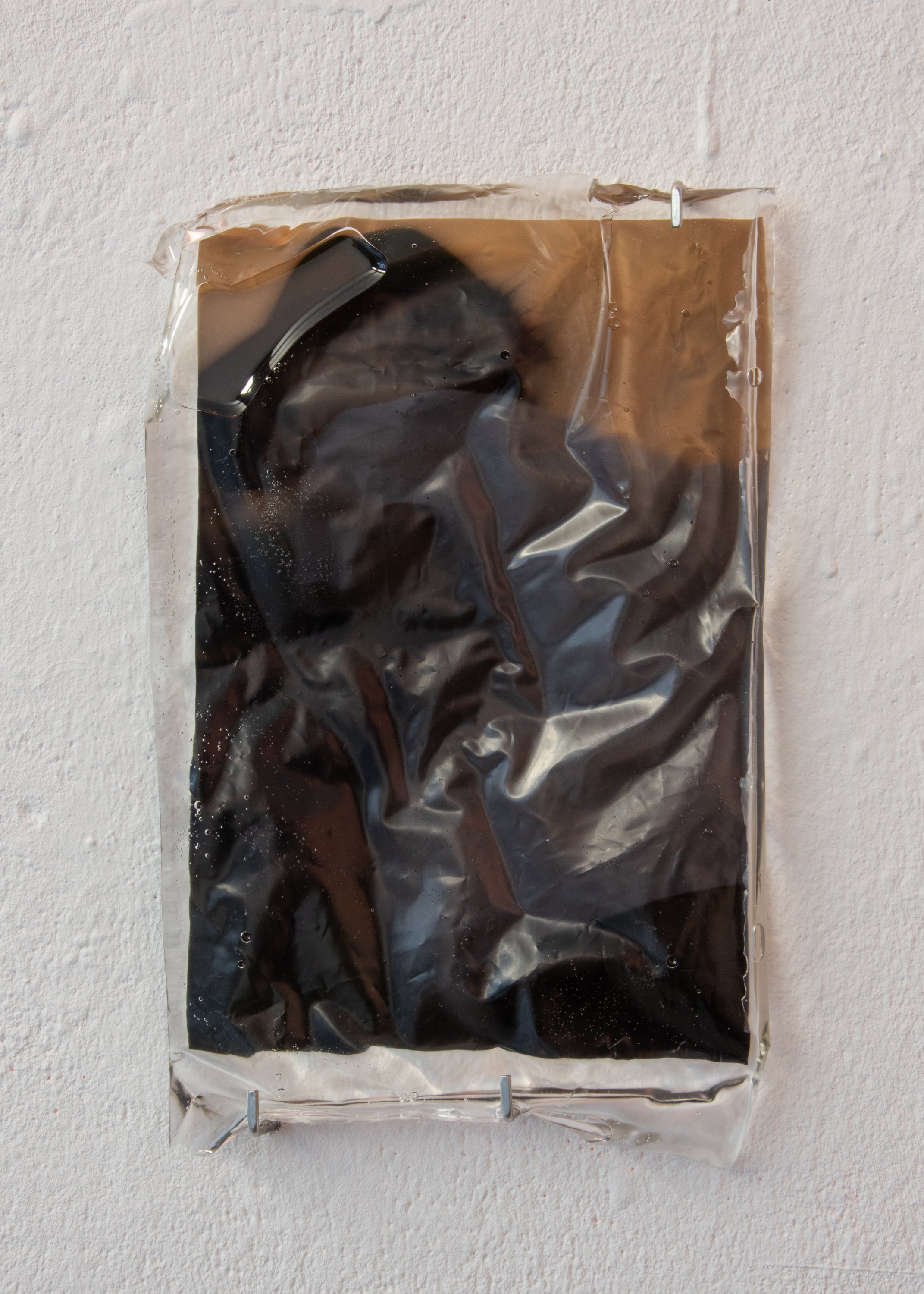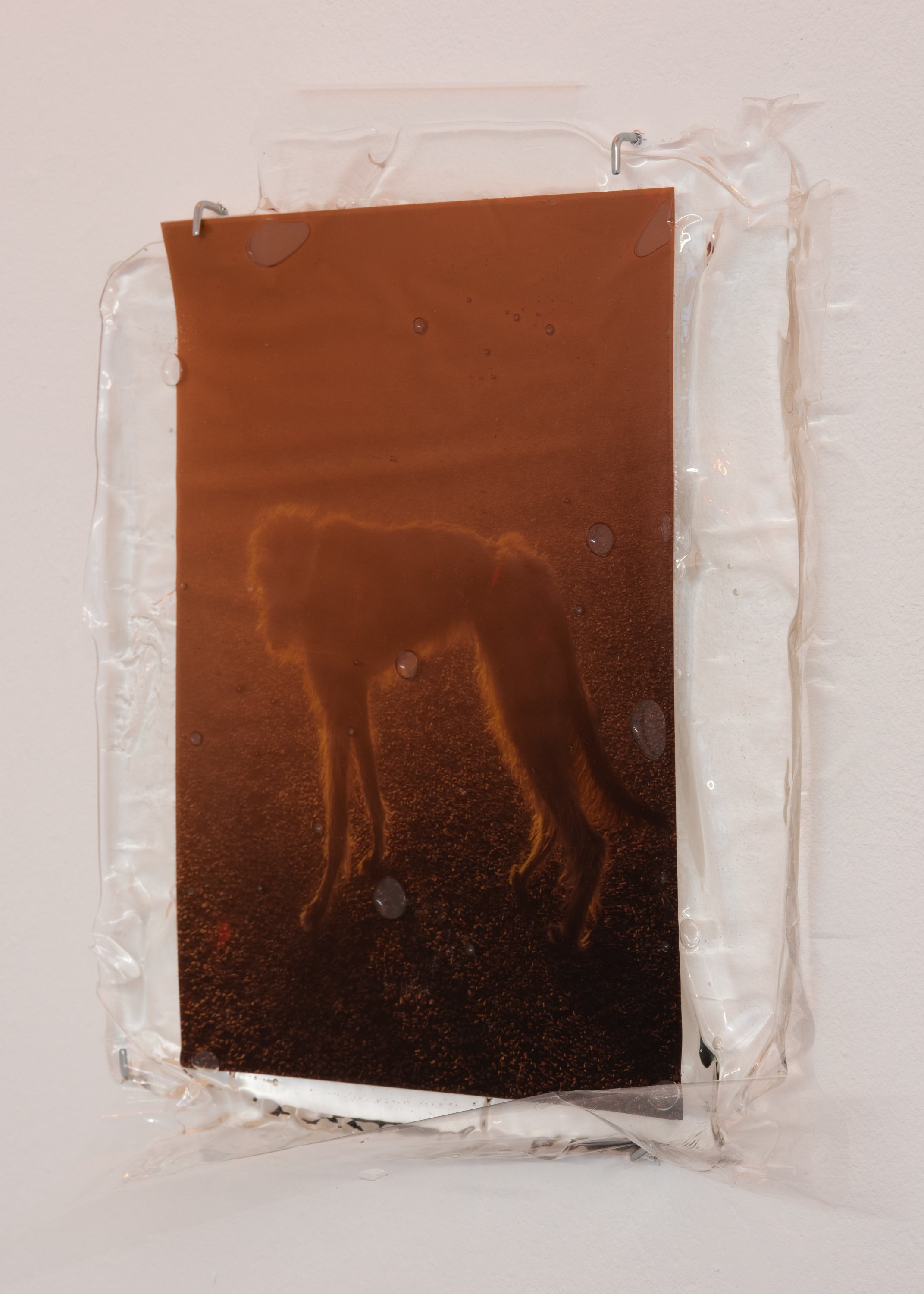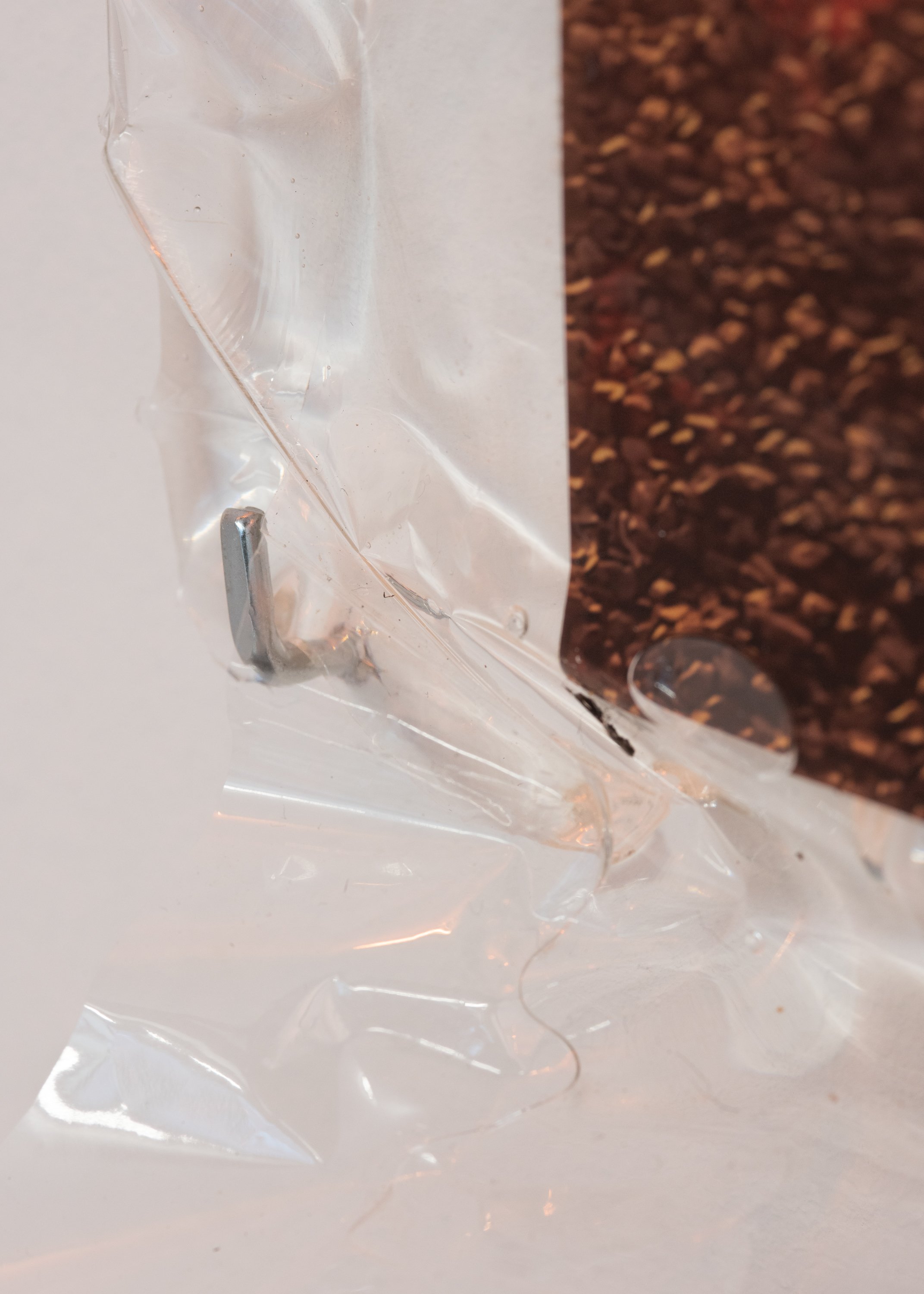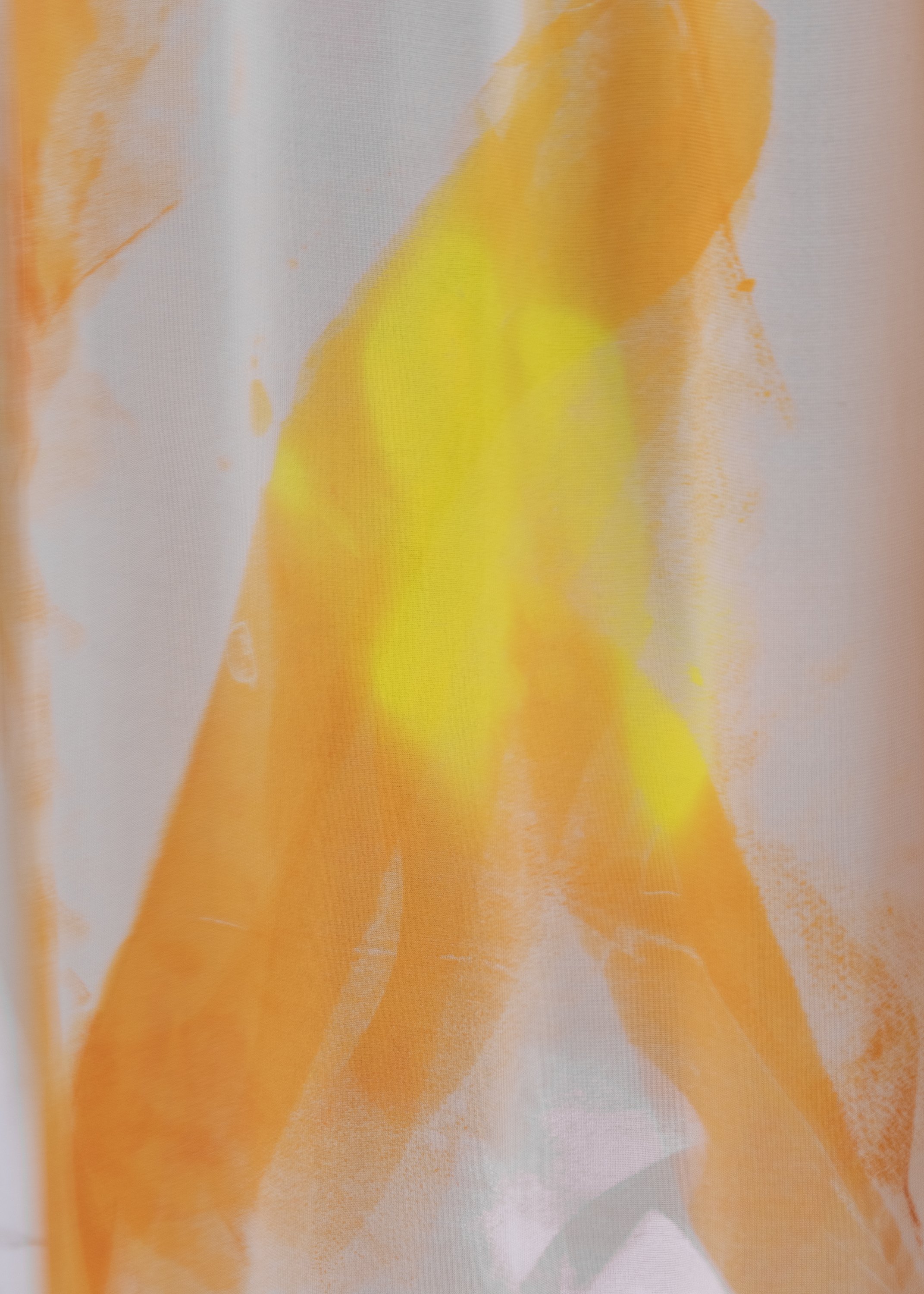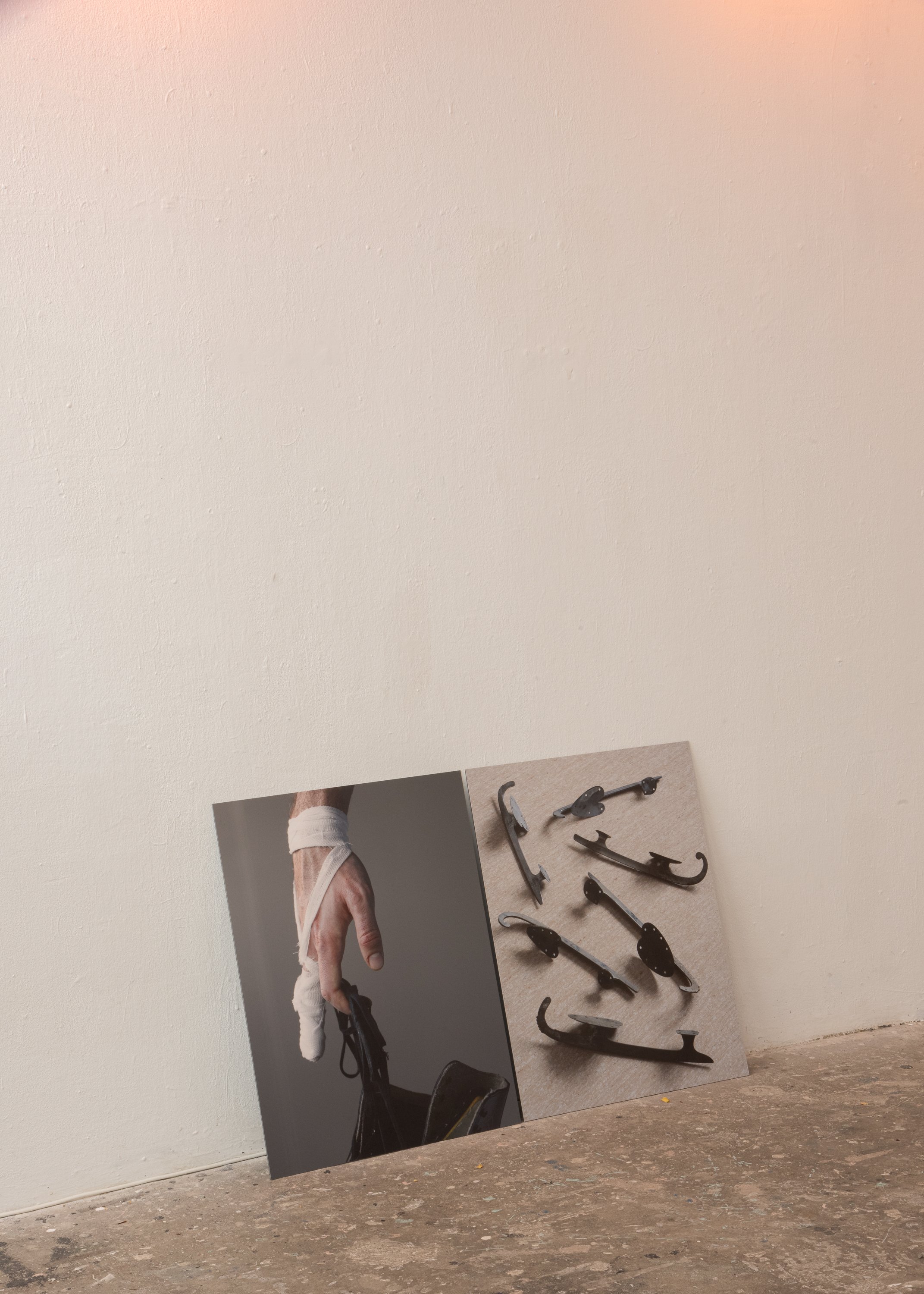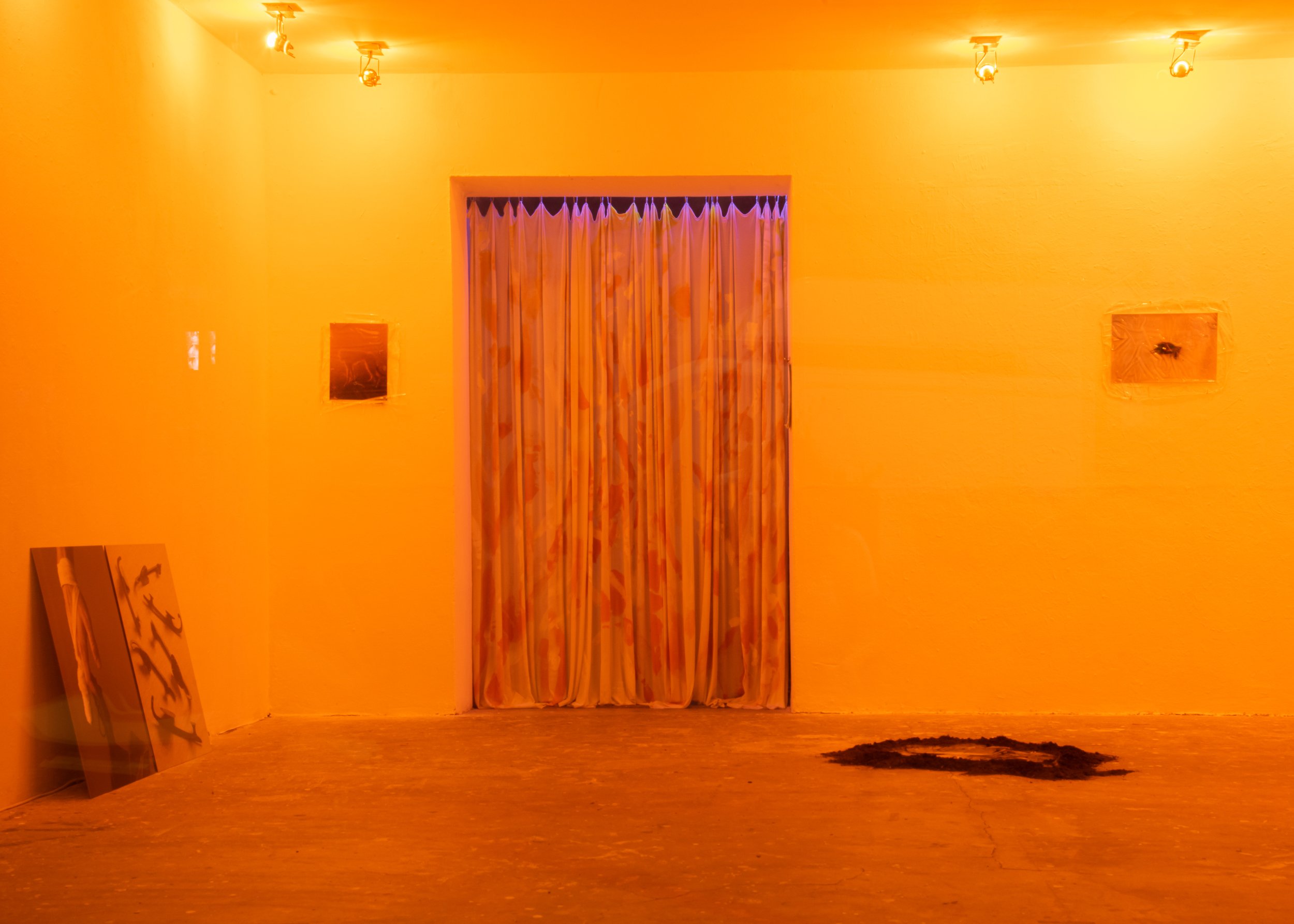I got it. The spinning camera zooming out in circles above an avatar lying on the cold
virtual ground. Reload.
I got it. Empty streets of another doomsday city seen from a window of an Internet café.
And glitching dripping icicles from gutters, turning into fuzzy stray dogs as they fall
down.
I got it. Growing up as much in computer games as in your house, your room, your bed.
I got it. A glistening arrow held in suspense versus a corrupt 3D-printing file for a neo-
puukko that freezes every printer mid-job.
I got it. So young yet so shrivelled!
Kliudžiau
an exhibition by Gedvilė Tamošiūnaitė
curated by LT.art Vienna
Vernissage & music performance by Alexandros Lousos: July 1, 6-10 PM
Exhibition: July 2 - 29, Wed - Fr, 3 - 7 PM
Improper Walls is pleased to announce Kliudžiau by Gedvilė Tamošiūnaitė, her first solo project in Austria. The exhibition features new productions by the artist as well as works created in collaboration with photographer Pavle Nikolić, illustrator Rūta Vėbraitė and fashion designer and artist Karolina Janulevičiūtė.
The exhibition title Kliudžiau, originally a title of a story by 19-century Lithuanian writer Jonas Biliūnas, functions as a phonetic trope, an onomatopoeia, its pronunciation reminiscent of cutting, hitting, a physical material encounter.
Kliudžiau presents new photographic series by Tamošiūnaitė that continue her research into the present overlaps of physical and digital realms. The exhibition explores different areas and states of these transitions, and the forms they take in individual's social and emotional being. Among them is the topic of adolescence as a period of physical and emotional change where the notion of playfulness and naive games may turn into acts of aggression or unsolicited violence. This aspect is elaborated through visual and conceptual clues to gaming and play, and the relations between violence and the sense of guilt, amplified by the presence of digital simulation and stimuli that have become coming-of-age issues during the past decades.
The reoccurring leitmotif of these photographs, set in ice-like blocks of transparent epoxy resin, is a knife designed in a sci-fi style that the artist acquired during her research in preparation for the exhibition. The knife's iridescent blade gives a seducing aesthetic quality tothe object of aggression and cruelty. Through slightly distorting 'lenses' of epoxy resin, the shots of the object deceitfully appear not as photographs but rather as digitally rendered images, bringing back the physical knife to its places of origins, mainly to computer games like
"Mortal Combat" or other fantasy-cum-fighting video games. Other agents in the photography series – a boy, an Irish wolfhound, a webbed cluster of moth larvae – allude to various states of morphing, either as temporary states of change, or set conditions of hybridity.
Fond of collaborative practice, Gedvilė Tamošiūnaitė chose to invite a few collaborators to respond to the topics of her research and photographic practice; the invitation has become a launchpad for collaborative works also presented in the exhibition. Vienna-based photographer Pavle Nikolić responded to the invitation with a photographic work of his own, introducing new perspectives to the exhibition. The two photographs depict almost unrecognizable objects, which are, in fact, ice skates. In the exhibition, the images grasp the tension between the sharp object, the blades, and the activity of leisure and pleasure – ice skating.
The illustrator Rūta Vėbraitė, lives and works in Vilnius, conceived a drawing that is presented in a sculptural setting, an intricate installation that translates the idea of a liminal state between hiding, as in keeping a secret, and disclosing or uncovering. The illustration is inspired by drawings of a young boy that unintentionally, if not subconsciously replicate the digital user interfaces of video games.
The collaborative work with the Lithuanian fashion designer and artist Karolina Janulevičiūtė takes two different forms. The first work is a sculptural object that imitates the appearance of a fashion item, a handbag. Inside the work, a 3D-printed model of a knife is set in a nest-like setting, seemingly made by an animal, an insect. The sculpture manifests a hybrid form between an article of industry and a shape found in nature. The second collaborative work introduces a spatial change inside the exhibition space. A curtain design is printed with UV- sensitive dyes. It physically translates the concept of threshold and the moment of transition. This separation does not only divide the rooms but also controls the interior light, casting it in midnight-blue shade or imitating another temporal setting, shifting throughout the entire exhibition period.
(Text by Ignas Petronis)
ABOUT ARTIST
Gedvilė Tamošiūnaitė's (b. in Lithuania) work focuses on ways of transferring contemporary human emotions and feelings into visual digital culture and non-verbal codes. Taking the former as an emotional collective entity - non-organic, bloodless, and painless - she aims to detect gaps that expose it to reality and allow for influence. Her prior artistic experience led to an expanded creative field situating her commercial and personal work between photography, video art, and art direction.
gedvile.com
_
Supported by Stadt Wien & Lithuanian Council for Culture



